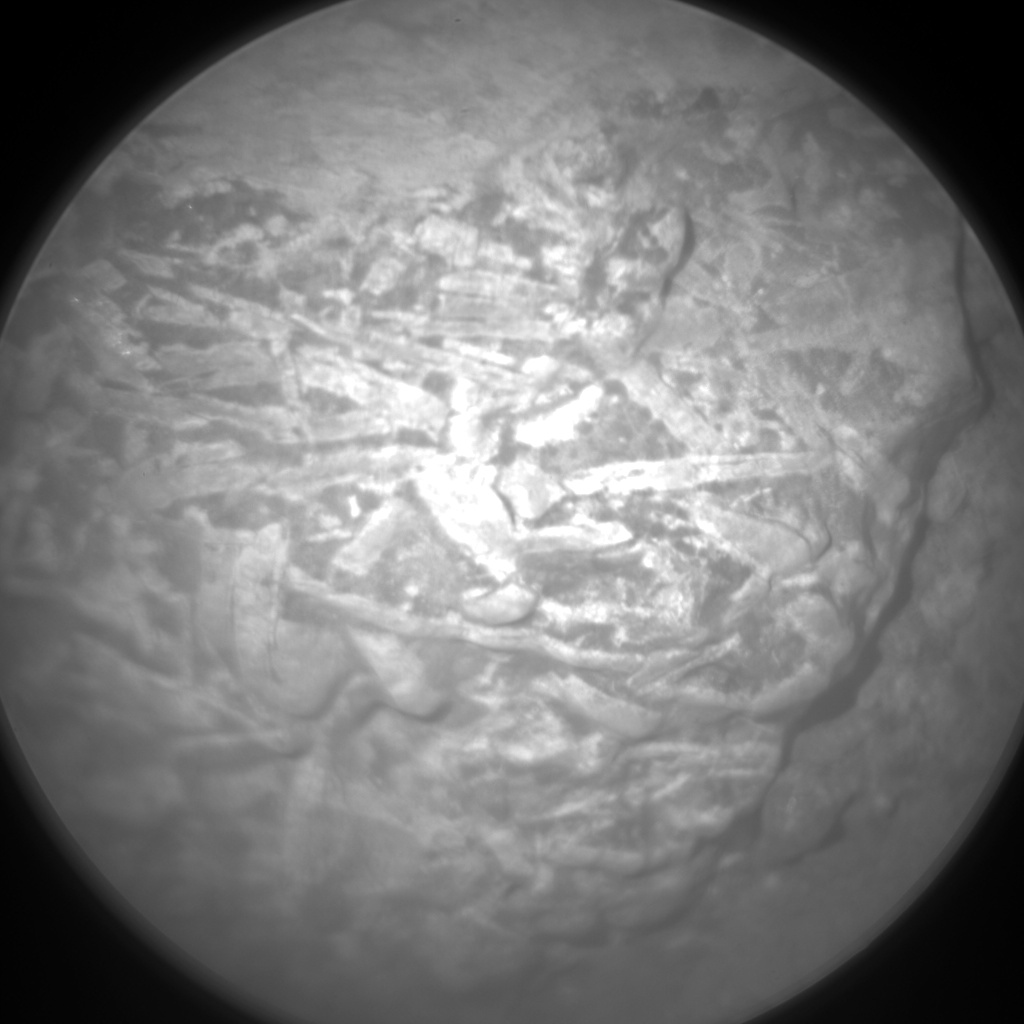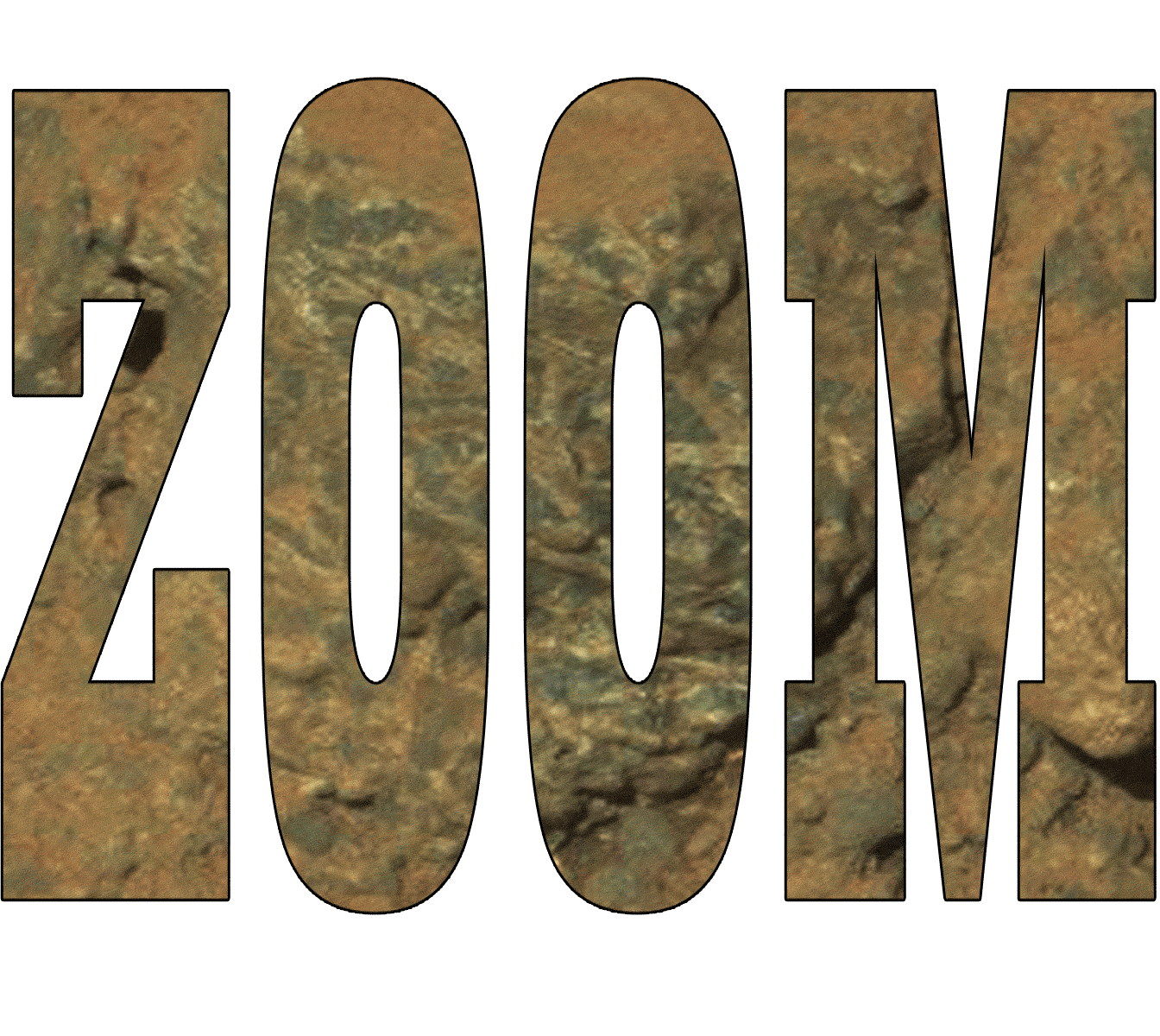It looks like you're using an Ad Blocker.
Please white-list or disable AboveTopSecret.com in your ad-blocking tool.
Thank you.
Some features of ATS will be disabled while you continue to use an ad-blocker.
share:
While looking through the Curiosity image archives, I came across an
interesting close-up of a rock (image acquired on Sol
514) featuring peculiar streaks which I haven't noticed before on any of the previous images.
I'm not a geologist, but they reminded me of fossilized seagrass or crinoid columnals. And when considering the recent thread on potential crinoid holdfasts, I was wondering whether this could be another piece of the puzzle that might fit into the bigger picture:
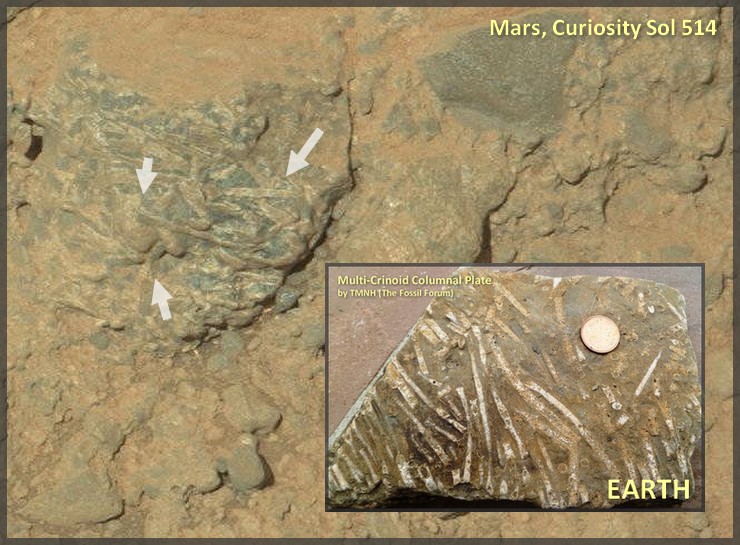
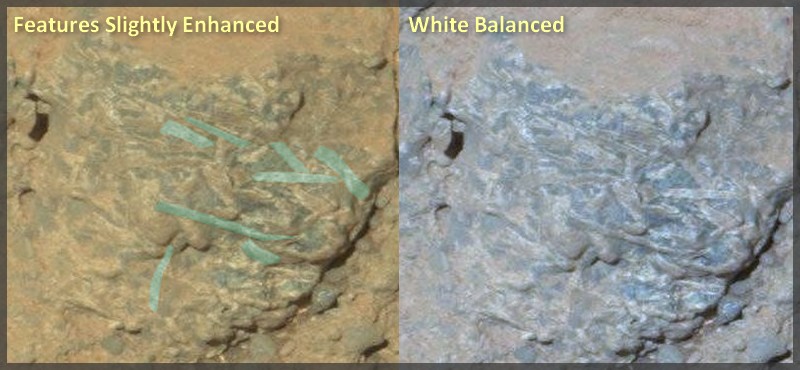
For comparison:
Fossils of the Georgian Bay Formation
For even further comparisons, also see:
1. Fossilized Seagrass Example 1
2. Fossilized Seagrass Example 2
3. Fossilized Seagrass Example 3
I also thought about these 'streaks' possibly being mineral inclusions similar to the veins discovered by Opportunity in 2011 at Homestake, but I also see some differences, eg. some overlapping parts and possibly even a rough segmentation on one of the features. In addition to super70's recent thread on crinoid holdfasts, I thought this is probably worth an own thread for discussing a potential connection between these two finds ...
SOURCES & LINKS:
----------------------
1. Original NASA/JPL image (Sol 514)
2. Crinoid Columnal Plate (Earth)
3. Mineral Veins on Mars (Homestake, Opportunity)
I'm not a geologist, but they reminded me of fossilized seagrass or crinoid columnals. And when considering the recent thread on potential crinoid holdfasts, I was wondering whether this could be another piece of the puzzle that might fit into the bigger picture:


For comparison:
Fossils of the Georgian Bay Formation
For even further comparisons, also see:
1. Fossilized Seagrass Example 1
2. Fossilized Seagrass Example 2
3. Fossilized Seagrass Example 3
I also thought about these 'streaks' possibly being mineral inclusions similar to the veins discovered by Opportunity in 2011 at Homestake, but I also see some differences, eg. some overlapping parts and possibly even a rough segmentation on one of the features. In addition to super70's recent thread on crinoid holdfasts, I thought this is probably worth an own thread for discussing a potential connection between these two finds ...
SOURCES & LINKS:
----------------------
1. Original NASA/JPL image (Sol 514)
2. Crinoid Columnal Plate (Earth)
3. Mineral Veins on Mars (Homestake, Opportunity)
edit on 23-1-2014 by jeep3r
because: text
reply to post by jeep3r
Interesting premise, and it does seem to hold the promise of being an important find. We really need a geologist on site to look at several of these findings. Thanks for the detailed OP, and on all of these type of threads we have to remember that Gale Lake was once a large and long-existing lake, so marine biology does play a part in theories about its lakebed and shoreline.
Interesting premise, and it does seem to hold the promise of being an important find. We really need a geologist on site to look at several of these findings. Thanks for the detailed OP, and on all of these type of threads we have to remember that Gale Lake was once a large and long-existing lake, so marine biology does play a part in theories about its lakebed and shoreline.
edit on 23-1-2014 by Aleister because: (no reason
given)
edit on 23-1-2014 by Aleister because: (no reason given)
reply to post by Aleister
Indeed, marine biology should be one of the fields to first come into play when knowing that this was once a habitable environment incl. an ancient lake. IMO these streaks do look unique and are different from the usual rock inclusions we saw up to now ...
Just like yourself, I'm also looking forward to further opinions on this. Specialists in the field are more than welcome to disprove or substantiate the analogy presented in this OP!
Indeed, marine biology should be one of the fields to first come into play when knowing that this was once a habitable environment incl. an ancient lake. IMO these streaks do look unique and are different from the usual rock inclusions we saw up to now ...
Just like yourself, I'm also looking forward to further opinions on this. Specialists in the field are more than welcome to disprove or substantiate the analogy presented in this OP!
S and f , i wonder what erosion/geological process created those criss crossing ribbons. Errr the wind stirred gypsom veins or errr em err water flood
brought errm a colection of mineral veins to entangle themselves or........
Im going to scream "FOSSIL LIFE"
Im going to scream "FOSSIL LIFE"
reply to post by Arken
Thanks for looking into this, Arken! The fact that NASA/JPL pointed their ChemCam on that rock means that they, too, wanted to know what these streaks consist of!
Seems like we now need to find out how to interpret the data collected by ChemCam ... and what kind of signatures we should be expecting when stumbling across fossilized organics!
Thanks for looking into this, Arken! The fact that NASA/JPL pointed their ChemCam on that rock means that they, too, wanted to know what these streaks consist of!
Seems like we now need to find out how to interpret the data collected by ChemCam ... and what kind of signatures we should be expecting when stumbling across fossilized organics!
edit on 23-1-2014 by jeep3r because: text
symptomoftheuniverse
S and f , i wonder what erosion/geological process created those criss crossing ribbons. Errr the wind stirred gypsom veins or errr em err water flood brought errm a colection of mineral veins to entangle themselves or........
Im going to scream "FOSSIL LIFE"
MSL Curiosity Rover "litterally" walk on a carpet of bones...
Wow what a great find Jeep3r! Very nicely done S and F.
This looks really interesting, certainly looks organic.
This looks really interesting, certainly looks organic.
reply to post by jeep3r
There is mounting evidence that there may have been life on Mars. The problem is that maybe this evidence came from another world that exploded, sending out organic meteors into space, that could have landed on earth. Life on earth could have started this way also.
What we think we see is not always reality, there could be many possibilities. This does look like possible fossils, but where did the fossils originate from. We will never know for sure, but there is mounting evidence that there may have been water and possibly life on Mars at one time. The same goes for the moon. Even other planets. Maybe there was a planet that blew up that formed the asteroid belt.
S&F
There is mounting evidence that there may have been life on Mars. The problem is that maybe this evidence came from another world that exploded, sending out organic meteors into space, that could have landed on earth. Life on earth could have started this way also.
What we think we see is not always reality, there could be many possibilities. This does look like possible fossils, but where did the fossils originate from. We will never know for sure, but there is mounting evidence that there may have been water and possibly life on Mars at one time. The same goes for the moon. Even other planets. Maybe there was a planet that blew up that formed the asteroid belt.
S&F
edit on 23-1-2014 by rickymouse because: (no reason given)
reply to post by jeep3r
This is what we should be keeping an eye out for, people keep claiming every rock is a skeleton, or a fossilised monkey or an (insert earth creature structure here).
Instead, we should be looking for evidence of plant life, that would be a sure sign that there is, was, or could have been life on Mars.
This is what we should be keeping an eye out for, people keep claiming every rock is a skeleton, or a fossilised monkey or an (insert earth creature structure here).
Instead, we should be looking for evidence of plant life, that would be a sure sign that there is, was, or could have been life on Mars.
iRoyalty
reply to post by jeep3r
This is what we should be keeping an eye out for, people keep claiming every rock is a skeleton, or a fossilised monkey or an (insert earth creature structure here).
Instead, we should be looking for evidence of plant life, that would be a sure sign that there is, was, or could have been life on Mars.
Plant life can take many forms, and have you seen the best example of a possible fossil found by user BuzzDengue and imagined by user funbox? Isn't it wonderful, and the media should be on this like a hog on another hog:
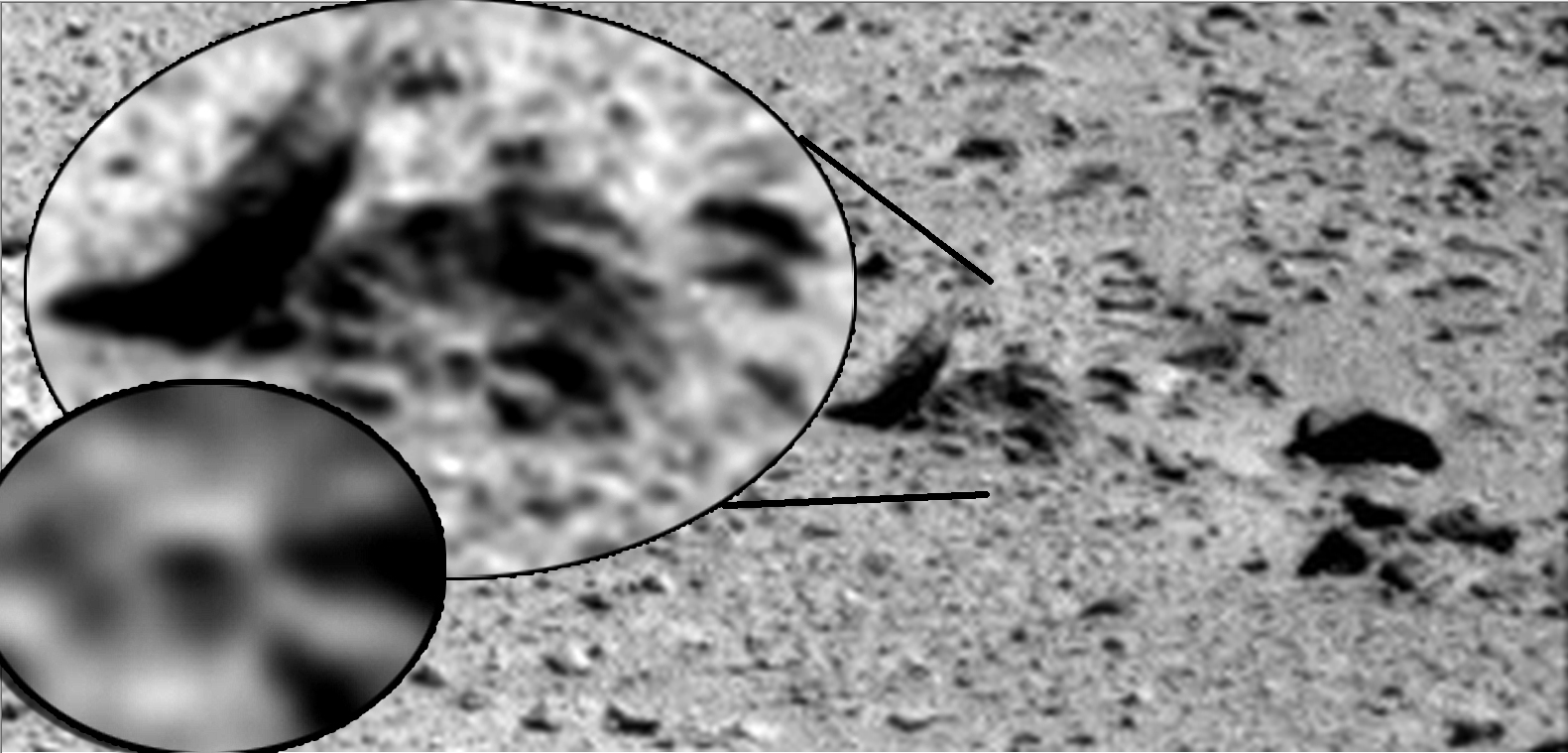
As for monkeys and lions and other creatures, nah. Unless you count my Mars lizard!:
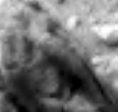
edit on 23-1-2014 by Aleister because: (no reason given)
funbox
reply to post by jeep3r
i have way to much time on my hands
Well, I'm quite sure you're pretty quick with those gif animations, considering the frequency with which you post them ... your visual support is much appreciated, keep it up!
super70
Wow what a great find Jeep3r! Very nicely done S and F.
This looks really interesting, certainly looks organic.
Thanks, super70, and back atcha ... your thread on crinoids was indeed useful and, in this case, helped homing in on what this might actually be. Let's keep our fingers crossed & hope for the best!
reply to post by Arken
Just an update: there are in fact two ChemCam images of this organic looking feature, taken on sol 514. In order to compile all available images in this thread, here go the pics incl. links to the original images:
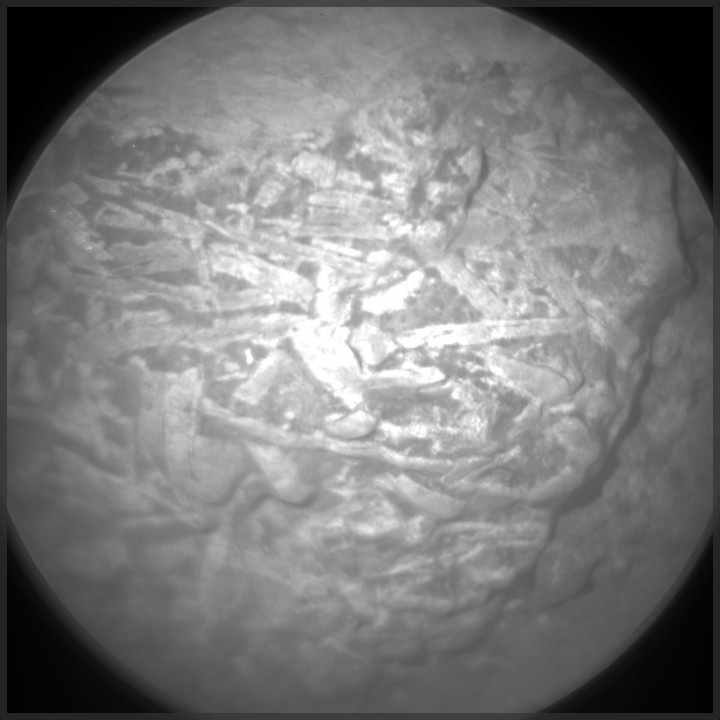
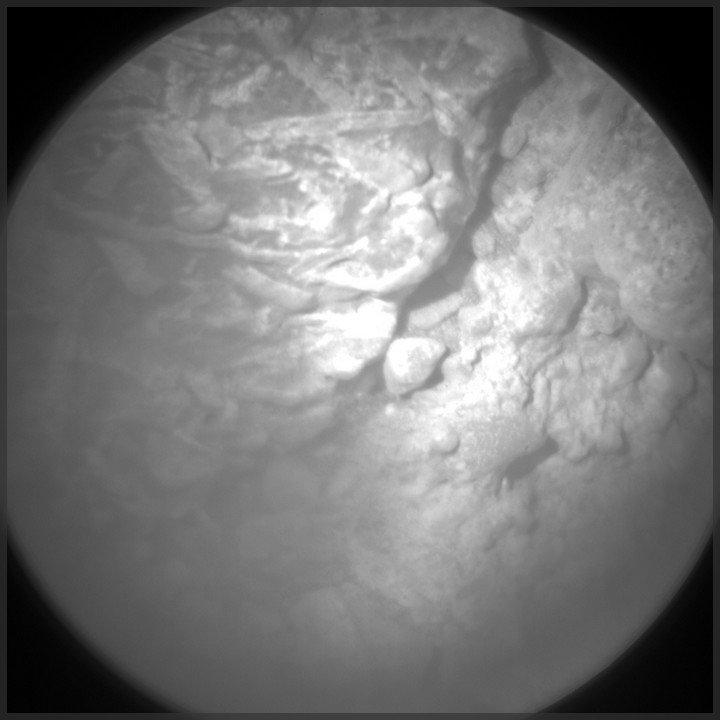
Sources / Links to Original NASA/JPL images (Fullsize):
-------------------------------------------------------------------
1. ChemCam Image 1
2. ChemCam Image 2
3. All ChemCam Images From Sol 514
P.S.: Still looks very intriguing to me ... possibly fossilized plant life/crinoid columnals/seagrass? Would be my best guess, doesn't look like mineral veins to me, but time will tell!
Just an update: there are in fact two ChemCam images of this organic looking feature, taken on sol 514. In order to compile all available images in this thread, here go the pics incl. links to the original images:


Sources / Links to Original NASA/JPL images (Fullsize):
-------------------------------------------------------------------
1. ChemCam Image 1
2. ChemCam Image 2
3. All ChemCam Images From Sol 514
P.S.: Still looks very intriguing to me ... possibly fossilized plant life/crinoid columnals/seagrass? Would be my best guess, doesn't look like mineral veins to me, but time will tell!
edit on 24-1-2014 by jeep3r because: text
reply to post by jeep3r
While keeping an eye on this, I came across a blog entry on a site called Meridiani Journal referring to this feature as "The Ribbon Rock", here goes the very brief text/description they provided:
Visualization Feldspar Lath (Earth)
Nothing official yet, but interesting nonetheless ...
Article Link
While keeping an eye on this, I came across a blog entry on a site called Meridiani Journal referring to this feature as "The Ribbon Rock", here goes the very brief text/description they provided:
Interesting ‘ribbon rock’ seen by Curiosity rover
While a lot of attention has been paid the last few days to the odd rock which “appeared” beside the Opportunity rover, the other rover, Curiosity, has found its own interesting little chunk of a Martian puzzle.
While not as publicized, it has been the subject of a lot of discussion among mission followers. What are the ribbon-like bands? Could they be feldspar laths? Another type of lath? Something else entirely? Curiosity has taken Mastcam and ChemCam images, but no other information is available yet.
/emphasis added/
Visualization Feldspar Lath (Earth)
Nothing official yet, but interesting nonetheless ...
Article Link
edit on 24-1-2014 by jeep3r
because: text
jeep3r
I'm not a geologist, but they reminded me of fossilized seagrass or crinoid columnals. And when considering the recent thread on potential crinoid holdfasts, I was wondering whether this could be another piece of the puzzle that might fit into the bigger picture:
That's a very interesting find.
That rock may have been created completely by geological processes, but it sure looks like made of independent parts, and those parts do not look like something created in a geological process.
That's the most interesting find I have seen until now.
reply to post by ArMaP
Thanks for your comment, ArMaP. Those independent 'segments' did look distinctive enough to pique my interest right away. I see some overlapping & bending in those 'streaks' as well as some kind of segmentation here and there. Makes me think that, whatever got enclosed in that rock, was probably a rather 'thin' material, judging from the looks of it.
It's a pity that this apparently hasn't been imaged by MAHLI! But I could imagine a number of reasons for that being the case ...
Thanks for your comment, ArMaP. Those independent 'segments' did look distinctive enough to pique my interest right away. I see some overlapping & bending in those 'streaks' as well as some kind of segmentation here and there. Makes me think that, whatever got enclosed in that rock, was probably a rather 'thin' material, judging from the looks of it.
It's a pity that this apparently hasn't been imaged by MAHLI! But I could imagine a number of reasons for that being the case ...
edit on
24-1-2014 by jeep3r because: text
reply to post by jeep3r
Here goes a contrast-enhanced version of the same feature(s) imaged by ChemCam:

Source Image (sol 514): mars.jpl.nasa.gov...
ETA: And again, what are those ribbons? Feldspar lath? Traces of deformation by impact pressure? Splinters of wood? Some other plants? Streaks of ancient toothpaste? You be the judge!
Here goes a contrast-enhanced version of the same feature(s) imaged by ChemCam:

Source Image (sol 514): mars.jpl.nasa.gov...
ETA: And again, what are those ribbons? Feldspar lath? Traces of deformation by impact pressure? Splinters of wood? Some other plants? Streaks of ancient toothpaste? You be the judge!
edit on 26-1-2014 by jeep3r because: text
new topics
-
Who guards the guards
US Political Madness: 1 hours ago -
Has Tesla manipulated data logs to cover up auto pilot crash?
Automotive Discussion: 2 hours ago -
whistleblower Captain Bill Uhouse on the Kingman UFO recovery
Aliens and UFOs: 7 hours ago -
1980s Arcade
General Chit Chat: 10 hours ago -
Deadpool and Wolverine
Movies: 10 hours ago -
Teenager makes chess history becoming the youngest challenger for the world championship crown
Other Current Events: 11 hours ago
top topics
-
Lawsuit Seeks to ‘Ban the Jab’ in Florida
Diseases and Pandemics: 15 hours ago, 20 flags -
Starburst galaxy M82 - Webb Vs Hubble
Space Exploration: 17 hours ago, 13 flags -
CIA botched its handling of sexual assault allegations, House intel report says
Breaking Alternative News: 12 hours ago, 8 flags -
15 Unhealthiest Sodas On The Market
Health & Wellness: 17 hours ago, 6 flags -
whistleblower Captain Bill Uhouse on the Kingman UFO recovery
Aliens and UFOs: 7 hours ago, 6 flags -
1980s Arcade
General Chit Chat: 10 hours ago, 4 flags -
Deadpool and Wolverine
Movies: 10 hours ago, 3 flags -
Teenager makes chess history becoming the youngest challenger for the world championship crown
Other Current Events: 11 hours ago, 3 flags -
Who guards the guards
US Political Madness: 1 hours ago, 1 flags -
Has Tesla manipulated data logs to cover up auto pilot crash?
Automotive Discussion: 2 hours ago, 0 flags
active topics
-
Lawsuit Seeks to ‘Ban the Jab’ in Florida
Diseases and Pandemics • 24 • : VariedcodeSole -
Scientists Say Even Insects May Be Sentient
Science & Technology • 53 • : seekshelter -
23,000 Dead People Registered Within a Two Week Period In One State
US Political Madness • 40 • : IndieA -
-@TH3WH17ERABB17- -Q- ---TIME TO SHOW THE WORLD--- -Part- --44--
Dissecting Disinformation • 609 • : Justoneman -
whistleblower Captain Bill Uhouse on the Kingman UFO recovery
Aliens and UFOs • 7 • : pianopraze -
CIA botched its handling of sexual assault allegations, House intel report says
Breaking Alternative News • 6 • : watchitburn -
They Killed Dr. Who for Good
Rant • 63 • : grey580 -
House Overwhelmingly Passes Funding for Ukraine, Israel and Taiwan
US Political Madness • 58 • : IndieA -
A Better Choice I Think
2024 Elections • 30 • : SchrodingersRat -
Michael Avenatti Says He Will Testify FOR Trump
US Political Madness • 60 • : Justoneman

